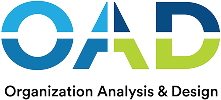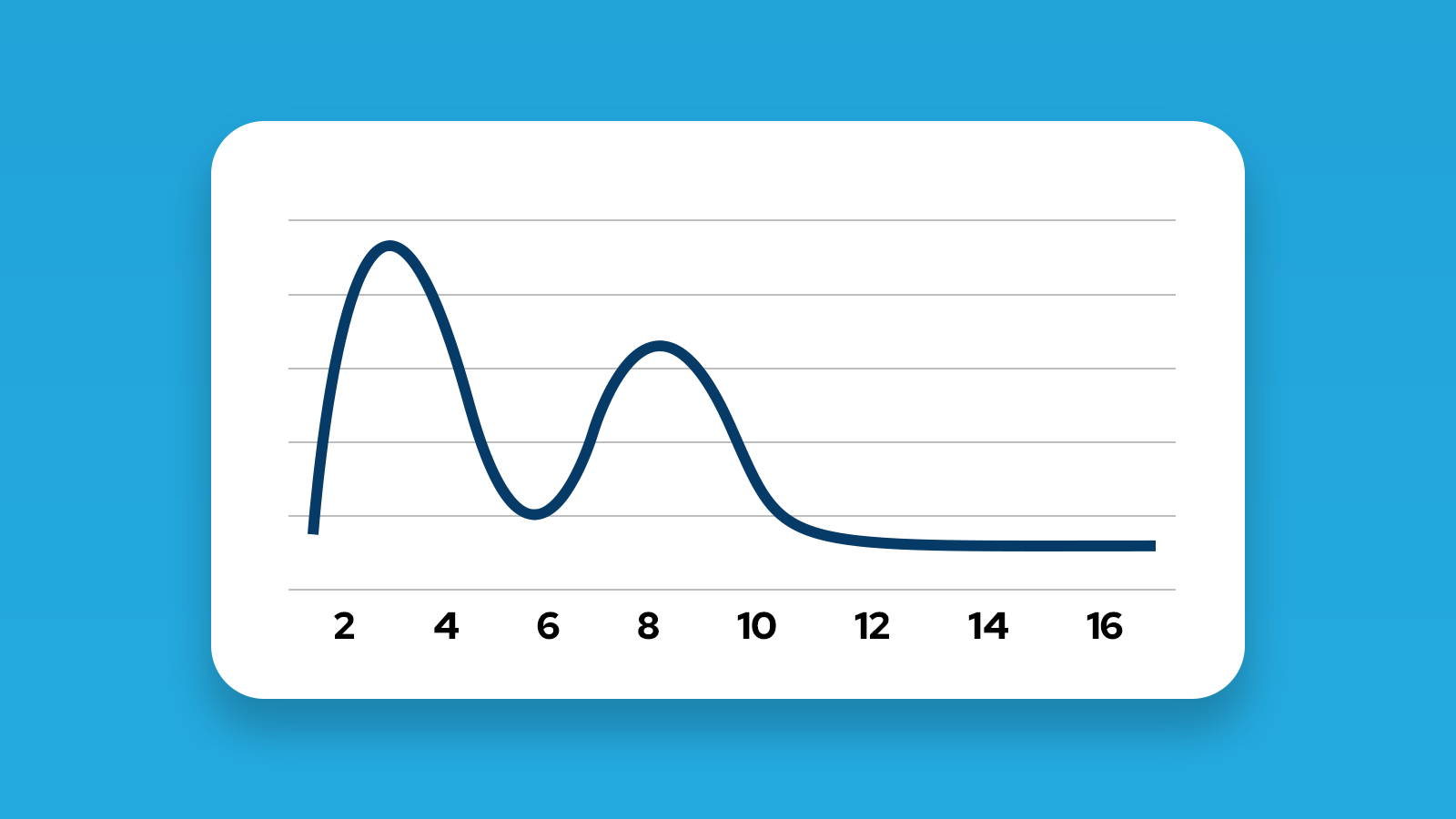Still relying on gut instinct to hire? Discover how a data-driven approach can reduce turnover, boost engagement, and build a stronger team—starting with four key steps.
Table of Contents
- Step 1: Use Pre-Hiring Assessment Tools to Collect Relevant Candidate Data
- Step 2: Define Crystal-Clear Role Expectations With Data Points That Matter
- Step 3: Prioritize Behavioral Competencies to Predict Long-Term Fit
- Step 4: Streamline the Interview Process With Actionable Insights
- Bonus Step: Leverage OAD’s Psychological Survey for Predictive Hiring
- Final Thoughts: Why Data-Driven Recruitment Matters
- Test OAD’s Data-Driven Hiring Tool For Free
Step 1: Use Pre-Hiring Assessment Tools to Collect Relevant Candidate Data
Hiring decisions shouldn’t hinge on resumes or first impressions alone. To build high-performing teams, you need more than a gut feeling—you need data. It’s essential to collect data systematically at every stage to ensure better hiring outcomes. That’s why today’s most effective recruitment strategies start with pre-employment assessments that evaluate not just skills, but mindset, personality, and long-term fit.
By using scientifically validated tools like OAD’s psychological survey, hiring teams can collect meaningful behavioral data before a single interview takes place. Collecting data at key stages helps identify bottlenecks and improve recruitment processes. These assessments reveal how a candidate is likely to think, communicate, and perform under pressure—insights that are impossible to capture from resumes or surface-level interviews alone.
Think of it this way: Every role in your company has its own success profile. The more your candidates align with that profile, the better their chances of thriving in the role. Pre-hiring assessments help you measure that alignment objectively, using relevant data instead of assumptions.
And the payoff? Companies that use behavioral assessments during early screening report better cultural alignment, stronger retention, and higher hiring manager satisfaction. You’re not just hiring the best available applicant—you’re hiring someone who’s primed for long-term success.

Pro Tip: Use assessments early in your funnel to prioritize qualified applicants and reduce time spent on applicants who may not be a long-term fit.
Step 2: Define Crystal-Clear Role Expectations With Data Points That Matter
Even the best candidates will struggle if they walk into a role with unclear expectations. Yet many job descriptions are too vague, too generic, or misaligned with what the role actually demands. This creates friction—not just during onboarding, but throughout the employee’s tenure.
A better approach? Use recruitment data and historical performance insights from multiple data sources—such as your ATS, performance reviews, and analytics tools—to define what success actually looks like in the role. What behaviors lead to top performance? What key performance indicators (KPIs) matter most? What do high-performing employees in this position have in common?
When you back your job descriptions with relevant data, you help candidates self-select and give your hiring team a stronger foundation for evaluation. This also allows you to confidently align your recruitment marketing with the qualities that truly matter, rather than defaulting to buzzwords or inflated requirements.
The more clearly you define the role, the easier it becomes to attract highly qualified candidates who are a genuine fit—not just for the title, but for the outcomes you expect them to deliver.
Pro Tip: Work with hiring managers to co-create performance profiles tied to real data points. This ensures everyone is aligned on what success looks like—from Day 1 through Year 1.
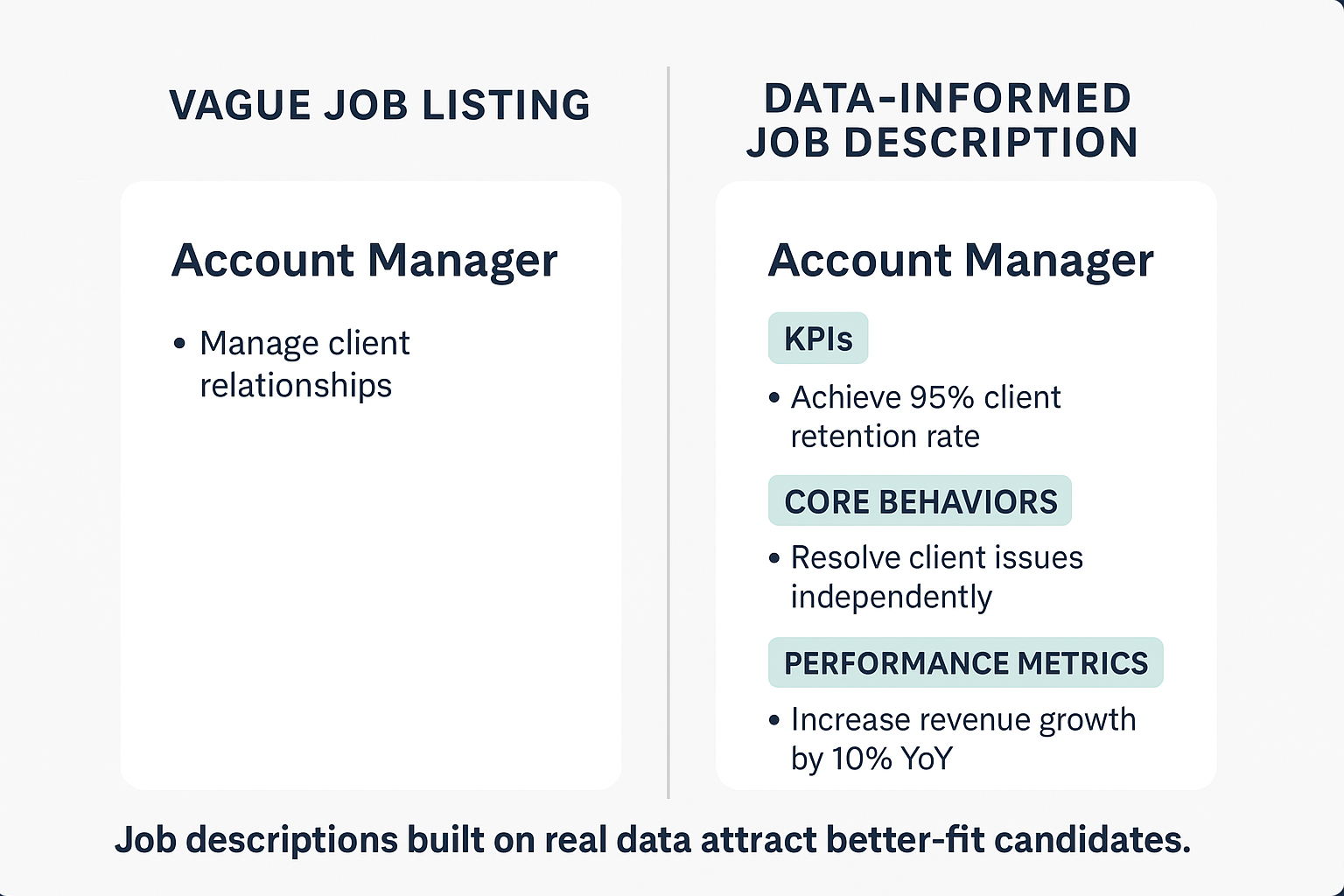
Step 3: Prioritize Behavioral Competencies to Predict Long-Term Fit
Technical skills may get a candidate in the door—but it’s their behavioral competencies that determine whether they’ll thrive in your organization. Traits like adaptability, collaboration, initiative, and resilience aren’t just “nice to have”—they’re often what separates top performers from average ones.
Yet too many hiring processes still default to resume-based screening and surface-level technical evaluations. That’s a missed opportunity. By focusing on data-driven recruiting, your team can identify the qualities that consistently predict success—across roles, departments, and even managers.
Start by taking a closer look at your existing recruitment data. Which behavioral traits consistently show up in your top performers? Use data analysis to identify those patterns—drawing from sources like interview scores, applicant tracking systems, and candidate performance metrics. This gives you the foundation to build behavioral benchmarks that are both objective and repeatable. Once established, apply those benchmarks during interviews using structured questions and consistent scoring. It’s a data-driven approach that helps your hiring team evaluate candidates fairly—and with confidence.
Remember, you’re not just hiring for skills. You’re hiring for potential, fit, and long-term growth.
Pro Tip: Ask candidates about real-world situations that reflect the competencies you’re targeting. Look for patterns, not just polished answers.
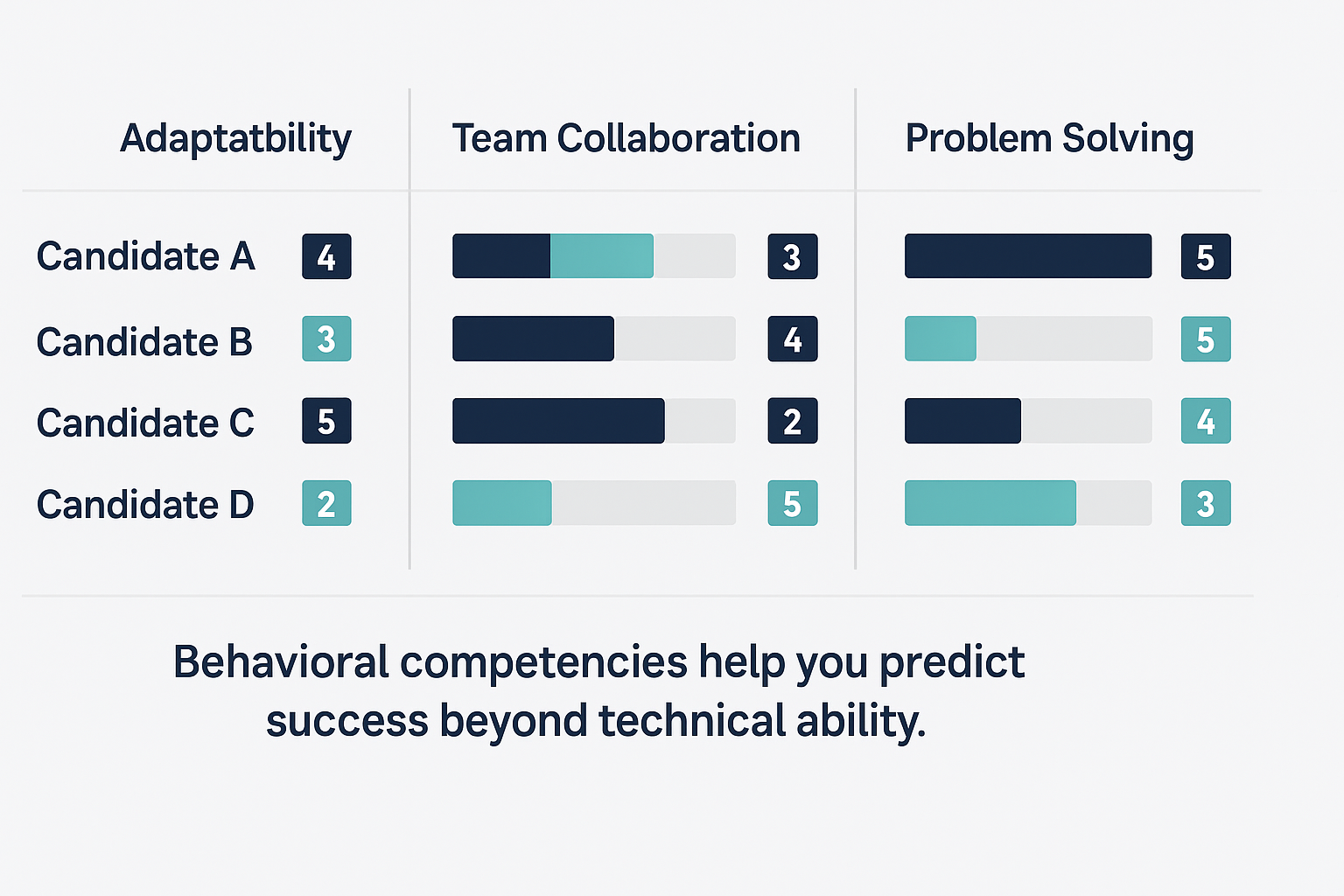
Step 4: Streamline the Interview Process With Actionable Insights
A slow or disorganized interview process doesn’t just frustrate candidates—it costs you top talent. In today’s hiring landscape, speed is a competitive advantage. High-quality applicants often juggle multiple offers. If your process drags, they’ll move on.
The solution isn’t rushing—it’s refining. A streamlined interview process focuses on what truly matters: evaluating behavioral competencies, confirming cultural fit, and aligning with role-specific KPIs. Everything else is noise.
To do this well, your hiring team needs actionable insights—not just resumes or instinct. Tools like applicant tracking systems, recruitment software, and structured scoring rubrics help eliminate bottlenecks while keeping the focus on high-impact questions. Better yet, using data analytics during debriefs ensures consistency across interviewers and surfaces hidden concerns early.
If your current process includes unnecessary steps, duplicated efforts, or inconsistent evaluation methods, it’s time to rethink your approach. Clean processes = better candidate experiences = more qualified candidates who say yes.
Pro Tip: Audit your current workflow. What steps can you automate, shorten, or cut altogether without sacrificing decision quality? Leveraging recruitment software and predictive assessments can help you identify the best candidate for each role and ensure new hires are matched to positions where they will thrive.
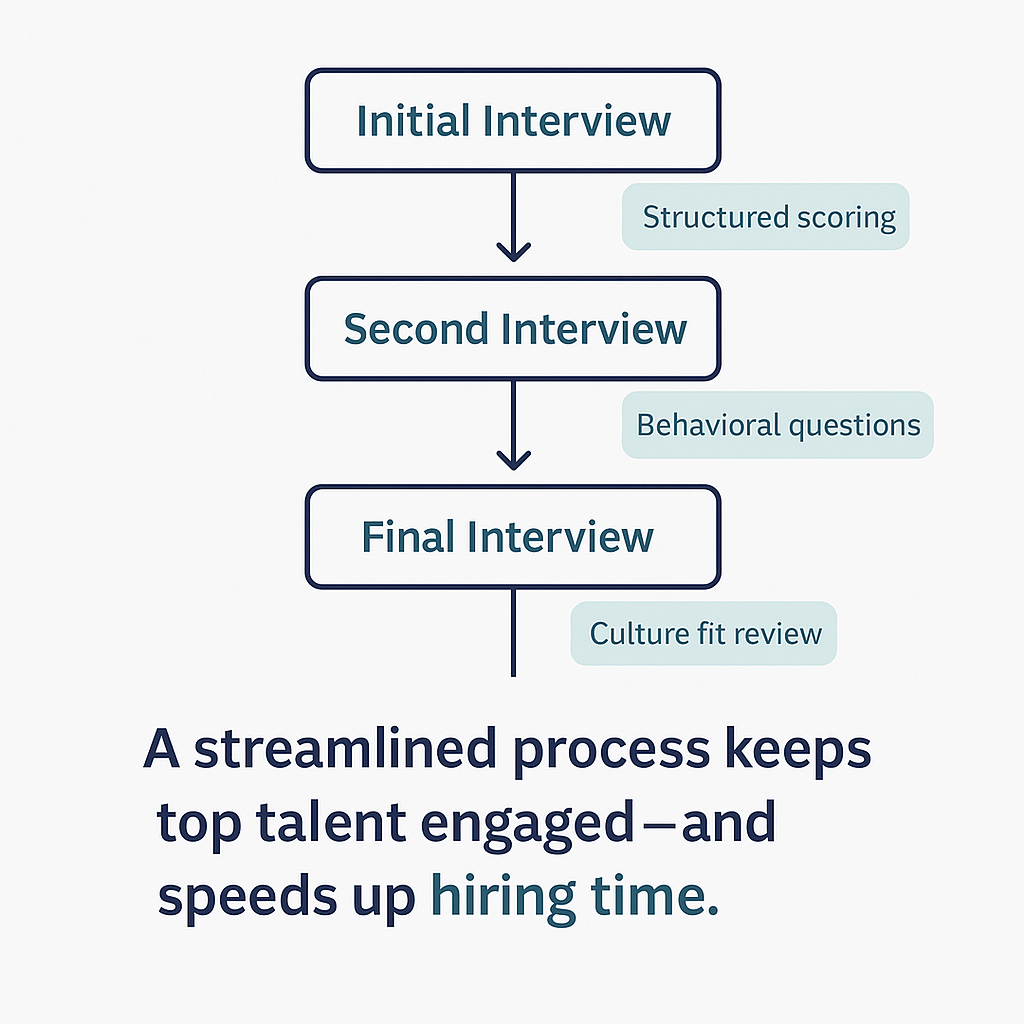
Best Practices for Data-Driven Recruitment Success
To get the most out of your data-driven recruitment strategy, it’s critical to put the right systems and habits in place.
Start by defining clear goals and aligning them with measurable key performance indicators (KPIs)—whether it’s improving time-to-hire, boosting the quality of hire, or reducing hire cost. These metrics will help your team evaluate what’s working and fuel continuous improvement over time.
Next, invest in consistent, reliable data collection methods. Track how many candidates come from each recruitment channel, gather candidate feedback, and identify which sources produce the most qualified applicants. Tools like analytics platforms and applicant tracking systems make it easier to gather insights at every step of the recruiting process.
Make data-driven decision-making part of your team’s culture. Let the data guide how you write job descriptions, screen resumes, conduct interviews, and deliver feedback. This approach not only reduces bias but also ensures every decision is aligned with your talent goals.
And don’t underestimate the importance of the candidate experience. Use data to streamline applications, simplify touchpoints, and maintain timely communication. Candidates notice—and it can be the difference between landing top talent or losing them to a faster competitor.
Regular strategy reviews will help your recruiting team stay sharp. Use the insights you collect to adjust and optimize as your business evolves.
Overcoming Common Challenges in Data-Driven Recruitment
No hiring strategy is without its hurdles—and even the most advanced data-driven recruitment process has challenges worth addressing.
One of the most critical issues? Data quality. If your recruitment data is incomplete, outdated, or inconsistent, it can lead to flawed conclusions and biased decisions. That’s why strong data hygiene is non-negotiable. Regularly cleaning, validating, and standardizing your candidate data ensures you’re making decisions based on facts—not noise.
Another common roadblock is the upfront investment in tools. While platforms like applicant tracking systems and analytics tools can feel costly, they’re foundational for modern recruiting. These software solutions help you collect, analyze, and apply insights throughout the entire hiring process, making them essential to long-term ROI.
Lastly, striking the right balance between data and intuition is key. Data helps you make more objective decisions—but it shouldn’t replace the human element. The most successful teams use a hybrid approach: letting data analysis guide decisions while still valuing the experience and instincts of their hiring managers.
By investing in clean data, using the right tools, and combining analytics with human insight, you can overcome these challenges—and unlock the full potential of data-driven hiring.
Bonus Step: Leverage OAD’s Psychological Survey for Predictive Hiring
If you’re serious about transforming your hiring strategy, one tool can make all the difference: OAD’s psychological survey. Backed by decades of research and trusted by leading organizations, this assessment goes beyond resumes, interviews, and references. It gives you predictive insights about how candidates are likely to behave, lead, and grow—before they even walk through the door.
A strong data-driven recruitment strategy starts with clean, reliable data. That means practicing good data hygiene—making sure every data point you collect is accurate, consistent, and ready to inform decisions. The more trustworthy your recruitment data, the more confidently your recruiting team can act.
By leveraging multiple recruitment channels—from targeted job listings to optimized job boards—you expand your reach and attract more qualified talent. Monitoring key metrics like hire cost and managing your recruitment budget also allows you to fine-tune your strategy and maximize ROI.
It all comes down to disciplined data collection methods. When your talent acquisition team gathers and analyzes information in a structured way, you eliminate bias and improve the quality of every hire. Regular strategy check-ins help your team stay aligned on goals, evaluate results, and confidently advise stakeholders on what’s working—and what needs to change.
And throughout the recruitment process, don’t overlook the candidate experience. Personalized communication and timely follow-ups go a long way in attracting and retaining top talent in a competitive job market.
OAD helps you:
- Identify highly qualified candidates based on behavioral alignment
- Reduce hiring time by flagging best-fit applicants early
- Improve new hire retention by matching people to the right roles
- Increase hiring manager satisfaction with confident, consistent decisions
Companies using OAD have reported measurable improvements in quality of hire, team performance, and long-term engagement. If you want to stop relying on instinct and start hiring with certainty, this is your edge.
Pro Tip: Use OAD early in the recruitment process to filter for fit before interviews even begin—and watch your hiring efficiency improve instantly.
The Future of Data-Driven Recruitment: Trends to Watch
The future of data-driven recruitment is being shaped by rapid innovation—and HR teams that stay ahead of the curve will be best positioned to win top talent.
Technologies like artificial intelligence (AI) and machine learning (ML) are now core to modern recruiting. From automating repetitive tasks to predicting candidate performance and personalizing the candidate experience, AI is helping recruiting teams work faster and smarter.
As data collection becomes more sophisticated, companies must also focus on data hygiene and candidate data privacy. Collecting and managing personal information responsibly—and in full compliance with regulations—is now a baseline expectation.
Another emerging priority? Using data to drive diversity, equity, and inclusion (DEI). By analyzing recruitment patterns, teams can identify bias, close gaps, and build fairer, more inclusive hiring processes.
Lastly, the adoption of advanced analytics tools and recruitment software solutions will continue to expand. These platforms give talent acquisition teams deeper visibility into what’s working—and where to optimize.
Staying ahead of these trends doesn’t just future-proof your process. It positions your organization to attract highly qualified candidates, enhance recruiting efforts, and build stronger teams in an increasingly competitive hiring landscape.
Optimizing and Continuously Improving Your Hiring Process
An effective data-driven recruitment process isn’t one-and-done—it’s iterative. The best talent acquisition teams treat hiring like a performance system: constantly analyzing what’s working, what’s not, and where they can improve.
Use ongoing data analysis to evaluate which recruitment channels bring in the most qualified candidates, how new hires perform over time, and where bottlenecks may be stalling your efforts. These insights allow you to refine your recruiting efforts with precision, not guesswork.
Leverage predictive analytics to anticipate future needs, uncover potential skill gaps, and align your recruitment strategy with business goals. Routine strategy reviews—backed by metrics, not opinions—help your hiring team stay aligned, proactive, and agile.
Over time, this continuous optimization creates real impact: faster time-to-hire, stronger candidate experiences, and better quality of hire. When data drives your decisions, you’re not just filling roles—you’re building long-term value.
Enhancing the Candidate Experience in a Data-Driven Process
In today’s competitive job market, a strong candidate experience isn’t optional—it’s a strategic advantage. The best data-driven recruitment strategies go beyond efficiency and performance metrics—they focus on how candidates feel throughout the journey.
By using data analytics to track behavior and engagement, your recruiting team can uncover what matters most to applicants: where they drop off, which messages resonate, and what slows them down. These insights allow you to streamline the application process, eliminate complex online forms, and communicate in ways that feel timely and personal.
Data also helps you spot friction early. Are candidates waiting too long for updates? Are certain roles generating more dropouts? By continuously monitoring candidate feedback and journey metrics, you can reduce delays, deliver more relevant touchpoints, and improve hiring time—without compromising quality.
When you use data to refine every interaction, you don’t just improve conversion rates. You build trust, strengthen your employer brand, and create a reputation that attracts even more qualified applicants.
Final Thoughts: Why Data-Driven Recruitment Matters
The old way of hiring—relying on resumes, gut instincts, and rushed interviews—no longer cuts it. In a market where qualified candidates have more options and turnover is more expensive than ever, businesses can’t afford guesswork.
A data-driven recruitment strategy doesn’t just help you hire faster—it helps you hire smarter. From identifying the right traits to streamlining your recruiting process, using data at every stage leads to better-fit employees, stronger teams, and real business outcomes.
Think of it this way: Every time you rely on outdated methods, you risk making another costly mis-hire. But every time you use relevant data, you gain control—over who you bring in, how they’ll perform, and how long they’ll stay.
So whether you’re optimizing your hiring process or scaling a team across multiple departments, the shift to data-driven hiring isn’t just smart. It’s essential.
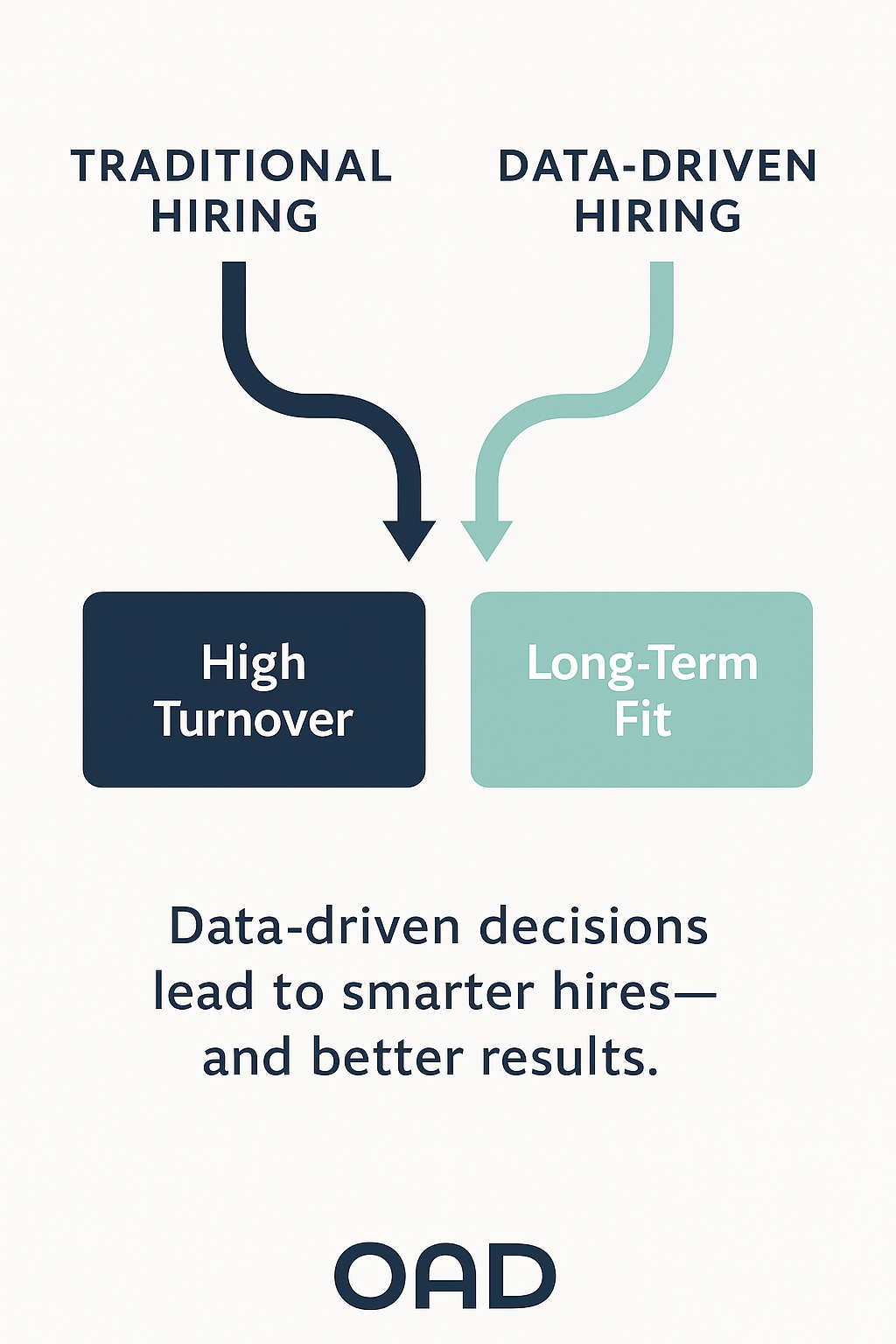
Test OAD’s Data-Driven Hiring Tool For Free
Ready to eliminate guesswork and start making smarter hiring decisions?
With OAD’s behavioral assessment platform, you’ll get the tools you need to identify top talent, reduce costly mis-hires, and align candidates with your company culture—before the first interview even begins.
Whether you’re hiring for one critical role or building an entire team, OAD gives your talent acquisition team the confidence to hire based on science, not instinct.
Don’t wait for your next mis-hire to take action—get ahead of the curve now.
